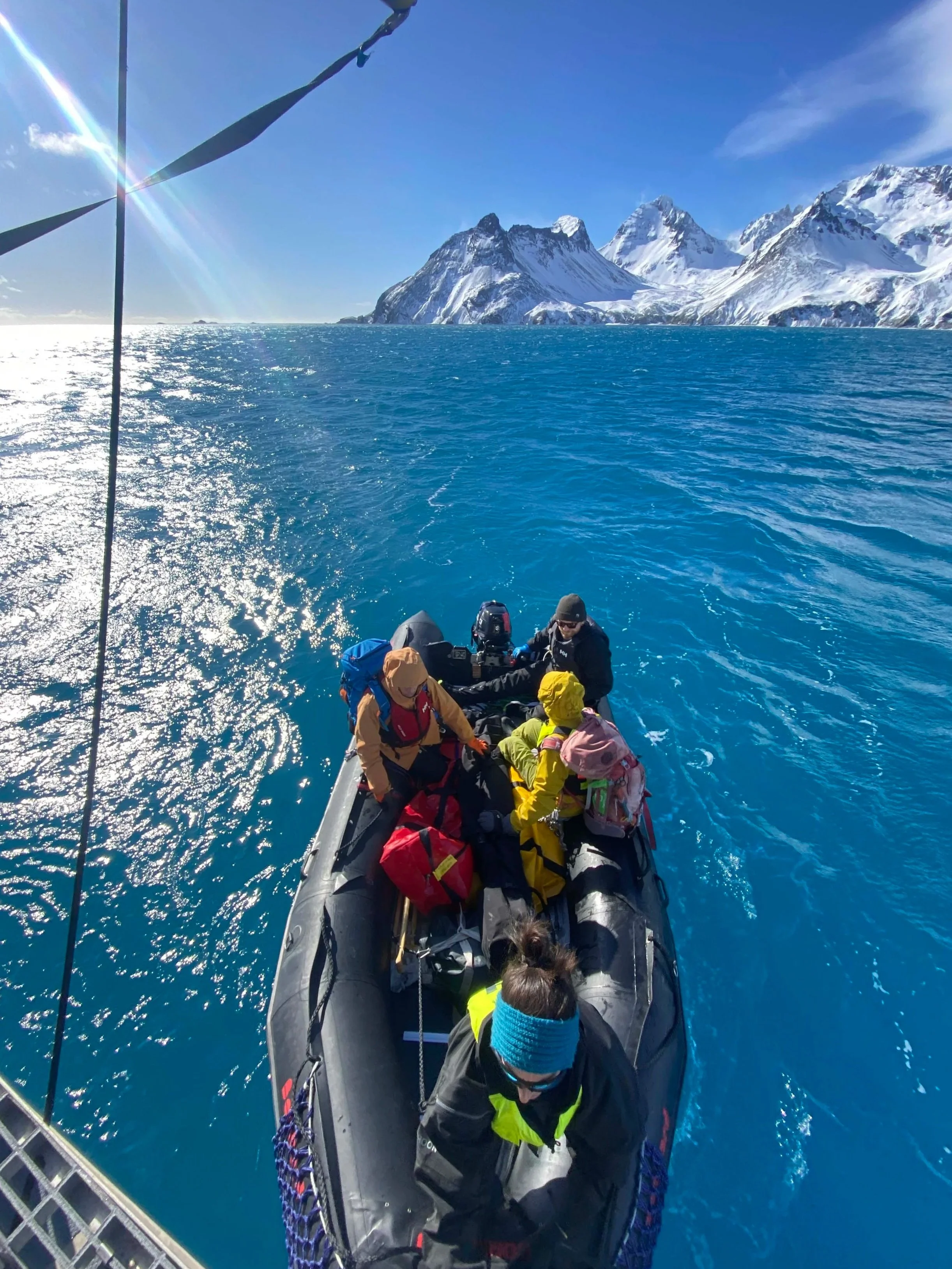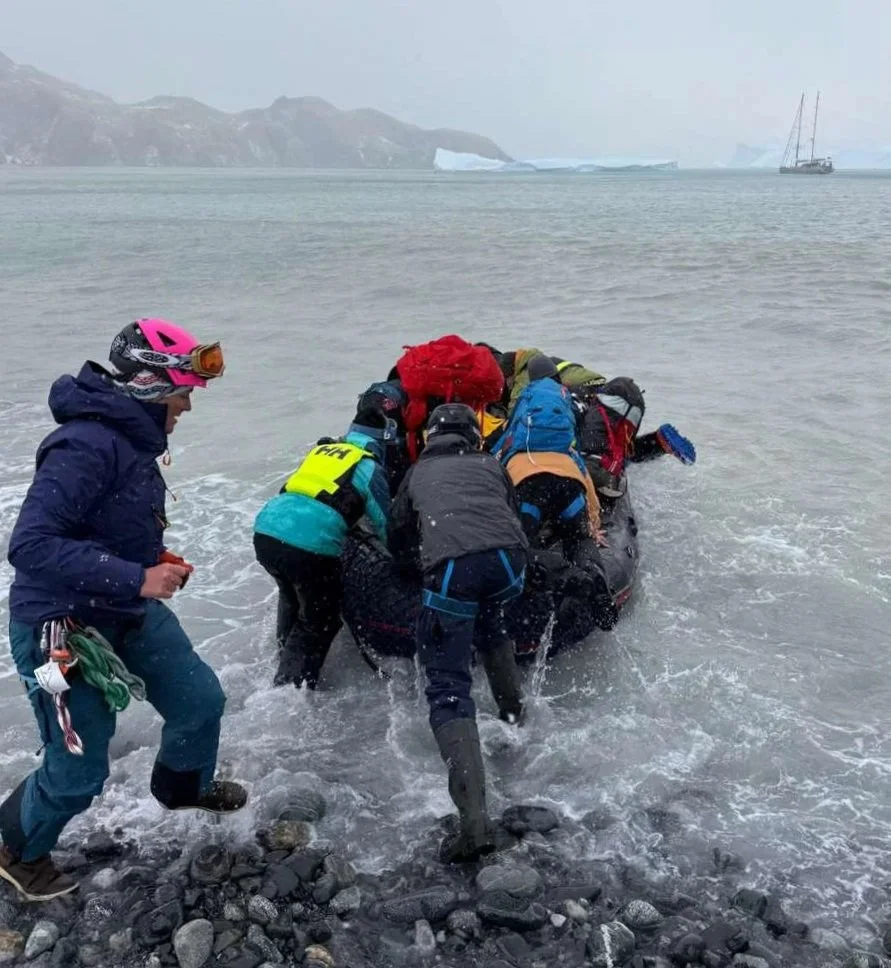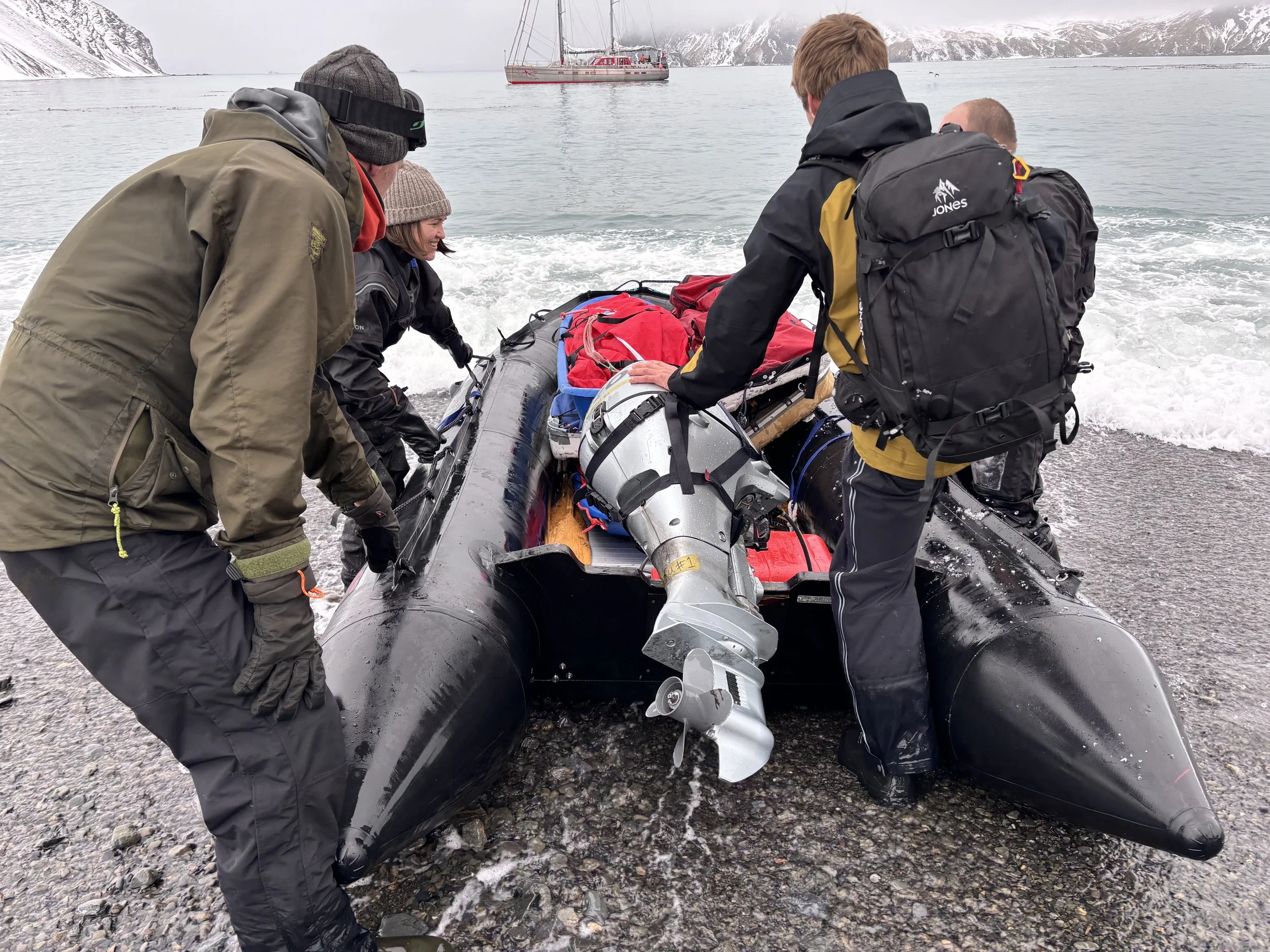Staying safe on South Georgia
Mariana and Paul, the Ninja pick up team at Hamilton Bay. Photo: Kirsty Maguire
Sailing through the Southern Ocean to South Georgia was always one of those dreams that sparkled in my imagination. The island is 800 miles downwind from the Falklands and because of the ferocity of the weather does not suffer fools gladly. The draw for those who venture to go there is the surfeit of not only birds and seals, but also the glaciers and many unclimbed mountains along the spine of two alpine ranges. It was an alluring mirage in my mind, but in the way of dreams that are voiced and explored and chased, sometimes they come true.
In 2018 I made my first trip there in a group with Skip Novak, Stephen Venables and other clients on Pelagic Australis, making a ski crossing over 12 days of the southern part of the island. This was as challenging as might be imagined in the South Georgia late winter, and the highs and lows are never forgotten.
So, when Stephen invited me to join the 2025 expedition as his deputy mountaineering leader on the Amundsen, there was absolutely no hesitation to go. Ski touring was the theme led by Stephen Venables. The group of eight had impressive outdoor CVs and we would be supported by the three-person sailing crew, operating from the comfortable base camp of the vessel. This combines many of my passions. I’m a keen recreational sailor, albeit this is far, far above my ‘pay grade’ of sailing. And thanks to being inspired by Douglas Scott, the Greenland and Himalayan photographer and mountaineering expedition pioneer from the 1950s – 70s, who also happens to be my great uncle, I have always been lured towards the ice. It is certainly addictive. As children, if we were ever to complain about cold, wet camping we were admonished with ‘what would Douglas think about your behaviour?’ This adventure was a curious mix of going back to my roots, but with again, that wild South Georgia dream to be realised.
South Georgia weather is not always picture perfect. Photo: Kirsty Maguire
I’m always fascinated by the things ‘in between.’ With my architect hat on, that is an everyday consideration to create beautiful spaces and experiences in and around buildings. When reflecting back on the last four weeks it seems appropriate to focus on the oft-ignored activity that is the ‘in between’ from sailing to skiing.
Getting from the Amundsen to the shore is a whole activity in itself. Weather changes in the blink of an eye with 30-40 knot gusts appearing out of nowhere. To begin, the yacht crew make a recce trip in the Zodiac to see if the surf is low enough (one day yes, next day no, although a ‘yes’ tends still be pretty meaty). The crew of Paul, Marianna and Jacob are in charge often in the ninja garb of full dry suits, balaclavas and ski goggles to facilitate a safe landing. The water is not far off 0 degrees C, the shore can be rocky (often preferred to a beach landing), the approaches often kelp bound and if it is snowing horizontally you start to wonder sometimes.
Crystal clear ocean and sparkling peaks beckon the ski team from Amundsen. Photo: Kirsty Maguire
Mariana in dry suit ready to jump in the surf on the landing
The crew time their landings like skilled penguins coming in at the end of the day of fishing, swooping on to a stony beach or nipping through a channel in the rocks to find a safe ‘harbour’ - timed perfectly with the swell. On the beaches the Zodiac needs to be turned around immediately to avoid swamping, while we pile out quickly in the shore break and grab skis and dry bags up on to the beach above the surf. On one occasion a penguin appeared and just about landed in the Zodiac with us. After days on Amundsen during the passage where everything is in motion, the first landing is significant - all of a sudden we are on ‘dry’ land.
Teamwork at pick-up. Photo: Amundsen team
Bow out for relaunching in the surf
Our gear taken ashore is not limited to our skis and rucsacs. Because conditions on the island change so fast, a robust contingency plan has to be in place. The first thing ashore on arrival and last thing to leave is always a ‘shore barrel’. This is filled with survival gear: an emergency shelter, a first aid kit with a splint and traction device, flares, food rations with a stove and gas, VHF radio and more in case we can’t get picked up on demand for one reason or another. Stephen and I carry more emergency kit while skiing and in the case of a more serious injury, a long pulk (sled), affectionately known as the ‘blood wagon’ is always on shore stashed with the barrel.
The emergency shore barrel is first in and last back out. Photo: Mariana Esperón
Expedition prep in Stanley. Setting up the ‘blood wagon’ with Stephen playing casualty. Photo: Kirsty Maguire
In all the years Skip and Stephen have been exploring here, this has only been used once when a skier broke a leg on an island crossing. Even with the best planning and risk management, we are all fallible.
It must be noted and understood there is no rescue facility or medi-vac system in place on the island. With no airstrip this is a given. The closest medical facility is in Port Stanley back upwind for those 800 miles which takes an average of five days. On South Georgia whether you are vessel based just for the landings, or as we, with more ambitious objectives on shore in the hills, the philosophy and modus operandus must always be conservative.
Waiting for pick up after skiing on the Solomon Glacier in less than perfect weather. Chuck Gates, Stephen Venables, Kirsty Maguire, Mark Lindborg, Martha Holmes, Titus McDermott. Photo: Peter Radosta
Kirsty Maguire
Deputy Mountaineering leader











